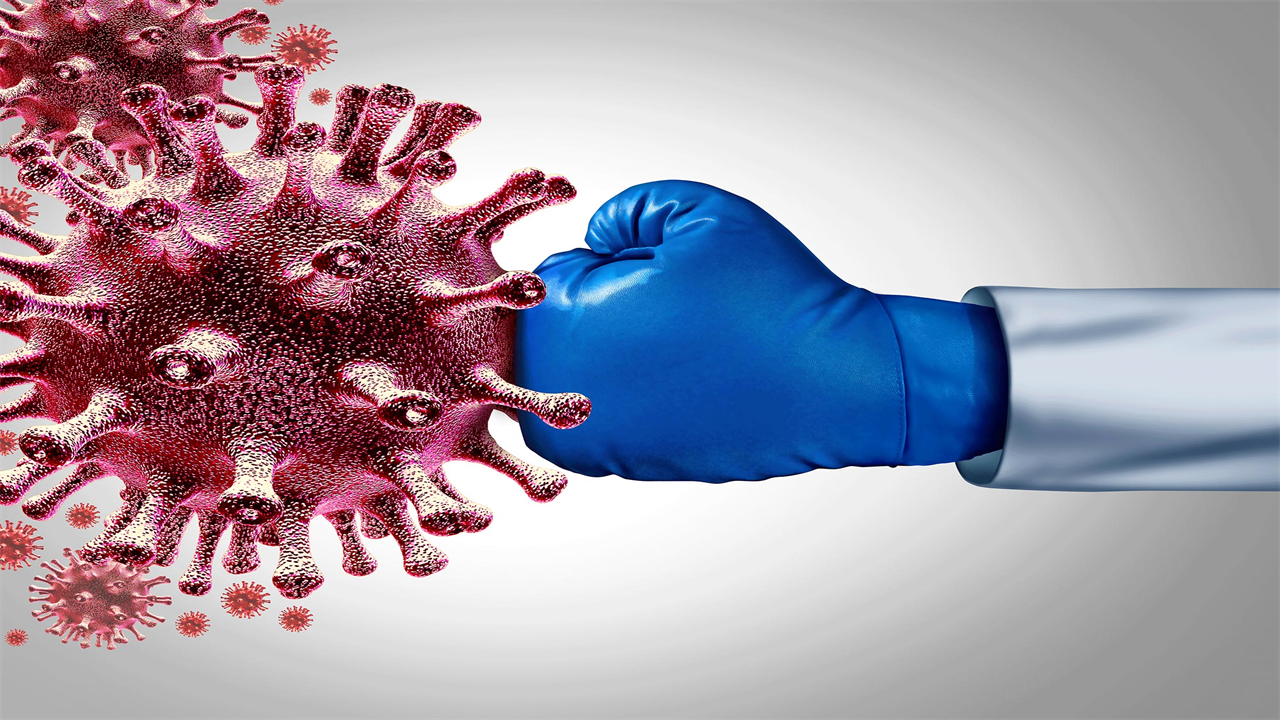Common Cold Can Protect Against Infection by COVID-19 Virus
0 View
Share this Video
- Publish Date:
- 15 June, 2021
- Category:
- Covid
- Video License
- Standard License
- Imported From:
- Youtube
Tags

Exposure to the rhinovirus, the most common cause of the common cold, may protect against infection by the virus that causes COVID-19, Yale researchers found.
In a new study, the researchers found that the common respiratory virus increases the activity of interferon-stimulated genes, early-response molecules in the immune system, which control the replication of the SARS-CoV-2 virus in airway tissues infected with the common cold.
Activating these defense mechanisms early in the course of COVID-19 infection holds promise to prevent or treat the infection, said Ellen Foxman, assistant professor of laboratory medicine and immunobiology at Yale School of Medicine and senior author of the study. One way to do this is by treating patients with interferons, an immune system protein that is also available as a drug.
“But it all depends on the timing,” Foxman said.
The results are published today (June 15, 2021) in the Journal of Experimental Medicine.
Previous work showed that in the later stages of COVID-19, high levels of interferon correlate with worse disease and can fuel overactive immune responses. But recent genetic studies show that interferon-stimulated genes may also be protective in cases of COVID-19 infection.
Foxman’s lab wanted to study this immune system early in the course of the COVID-19 infection.
Because previous studies by Foxman’s lab showed that cold viruses may protect against the flu, they decided to investigate whether rhinoviruses would have the same beneficial effect against the COVID-19 virus. For the study, her team infected lab-grown human airway tissue with SARS-CoV-2 and found that for the first three days, the viral load in the tissue doubled about every six hours. However, the replication of the COVID-19 virus was completely stopped in tissue exposed to rhinovirus. If the antiviral defenses were blocked, the SARS-CoV-2 could multiply in airway tissue previously exposed to rhinovirus.
The same defenses delayed SARS-CoV-2 infection even without rhinovirus, but only if the infectious dose was low, suggesting that the viral load at the time of exposure makes a difference in whether the body can fight the infection effectively. .
The researchers also studied nasal swab samples from patients diagnosed close to the onset of infection. They found evidence of rapid growth of SARS-CoV-2 in the first few days of infection, followed by activation of the body’s defenses. According to their findings, the virus usually increased rapidly during the first few days of infection, before the host’s defenses kicked in, doubling about every six hours, as seen in the lab; in some patients, the virus grew even faster.
“There appears to be a viral ‘sweet spot’ at the onset of COVID-19, where the virus multiplies exponentially before triggering a strong defensive response,” Foxman said.
Interferon treatment shows promise, but it can be tricky, she said, because it would be especially effective in the days immediately after infection, when many people don’t show symptoms. In theory, interferon treatment could be used prophylactically in high-risk people who have been in close contact with others diagnosed with COVID-19. Trials of interferon in COVID-19 are underway and so far they show a potential benefit early in the infection, but not when administered later.
These findings may help explain why during times of the year when the common cold is common, infections with other viruses such as the flu tend to be lower, Foxman said. There are concerns that as social distancing measures ease, cold and flu viruses — which have been dormant for the past year — will come back in greater force. Interference between respiratory viruses may be a mitigating factor, creating an “upper limit” on how much respiratory viruses circulate together, she said.
“There are hidden interactions between viruses that we don’t fully understand, and these findings are one piece of the puzzle we’re looking at now,” Foxman said.
Reference: June 15, 2021, Journal of Experimental Medicine.
Nagarjuna R. Cheemarla, a postdoctoral associate in Foxman’s lab, was the lead author of the study, which was conducted by a team of Yale scientists in the departments of Laboratory Medicine, Immunobiology and Genetics.
Other Yale authors included Timothy Watkins, Valia Mihaylova, Bao Wang, Marie Landry, Dejian Zhao and Guilin Wang.










